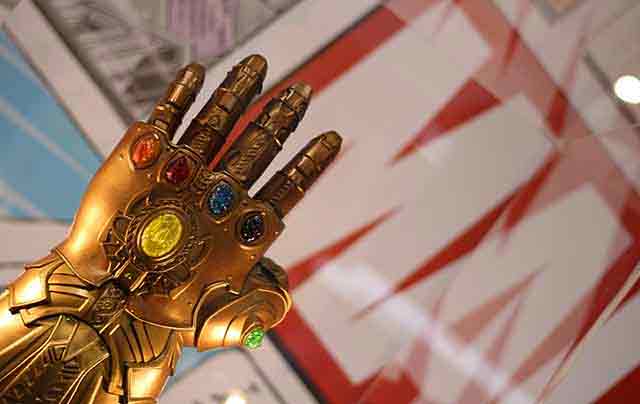Beyond Imagination: Discover the Animated Masterpieces That Redefined Cinema!
Amidst the pantheon of cinematic achievements, animated movies stand out as a testament to the power of human creativity. These films are not bound by the physical constraints of live-action filmmaking, allowing storytellers and artists to conjure up worlds of limitless possibility. From the earliest days of hand-drawn frames to the latest computer-generated wonders, animated movies have consistently pushed the boundaries of what is possible in cinema, redefining our expectations and expanding our imaginations.
The Dawn of Animation: A Historical Milestone
The history of animation is a saga brimming with innovation and artistic exploration. Early 20th-century visionaries like Winsor McCay laid the groundwork with captivating shorts like Gertie the Dinosaur (1914), which combined hand-drawn animation with live-action footage. But it was Walt Disney who truly set animation on its path to becoming a cinematic mainstay. With Steamboat Willie (1928), Disney introduced synchronized sound, bringing Mickey Mouse to life and capturing hearts worldwide. The studio's Snow White and the Seven Dwarfs (1937) broke new ground as the first full-length animated feature, proving that animated movies could be commercially viable and artistically compelling.
The Magic of Technicolor and Beyond
The innovation of Technicolor revolutionized animated movies by bathing them in vibrant colors that made the fantastical worlds even more engrossing. Disney's Fantasia (1940) exemplified this leap forward; it was an audacious project that melded animation with classical music, creating an experience that was both audiovisual spectacle and high art. As technology continued to evolve, so too did animation techniques. The '60s saw the introduction of Xeroxography, which facilitated more complex character designs and backgrounds, as evidenced by the charming spots of 101 Dalmatians (1961). Yet it was the eventual rise of CGI that would usher in a new era for animated movies.
Pushing Boundaries: The Arrival of CGI
The '90s heralded a seismic shift in animation with CGI's emergence. Pixar's Toy Story (1995), as the first fully computer-animated feature film, represented a leap forward not just technologically but narratively as well. Its engaging story and endearing characters demonstrated that animated movies could deliver emotional resonance on par with any live-action film.
Cultural Impact and Global Storytelling
Animated movies have increasingly embraced diverse narratives, reaching global audiences with stories rich in cultural significance. Japan's Studio Ghibli, under Hayao Miyazaki's guidance, created profound works like Spirited Away (2001). This Oscar-winning film wove together elements of Japanese folklore with universal themes like environmentalism and self-discovery, showcasing animation's potential as a medium for sophisticated storytelling.
Artistry in Motion: The Evolution of Animation Techniques
Animation has always been a laboratory for visual experimentation. Techniques like stop-motion breathed life into unique tales such as Tim Burton's The Nightmare Before Christmas (1993), while Spider-Man: Into the Spider-Verse (2018) shattered conventional norms by blending CGI with traditional hand-drawn animation to spectacular effect. These innovations highlight how each technique can be harnessed to serve the story and enhance viewers' engagement.
Influential Films and Creators
The impact of certain films and creators on the landscape of animated cinema cannot be overstated. The Incredibles (2004), directed by Brad Bird, combined exhilarating superhero action with relatable family dynamics, demonstrating that animated features could captivate audiences across age groups. On television, Rebecca Sugar's Steven Universe revolutionized serialized storytelling with its emotional depth and progressive themes.
Animated Movies as Social Commentary
Beyond entertainment, animated movies have frequently doubled as vessels for social commentary. Pixar's WALL-E (2008) provided critical reflections on consumerism and environmental stewardship within a charming narrative framework. DreamWorks' Shrek franchise humorously deconstructed fairy tale tropes while also challenging societal norms around beauty standards proving that animated films could be both sharp-witted satires and box office hits.
Redefining Modern Cinema
In contemporary times, ambitious projects like Loving Vincent (2017) continue to redefine what animated movies can achieve artistically. This film utilized thousands of oil-painted frames to narrate Vincent van Gogh's poignant story an extraordinary tribute to both the artist it portrayed and the art form itself.
The Future Is Bright
Looking ahead, the prospects for animated movies are dazzlingly bright. Emerging technologies such as virtual reality promise novel ways to immerse audiences in storytelling experiences, while advancements in AI may transform how animations are produced. We stand at the dawn of yet another transformative period in this ever-evolving medium.
In Conclusion
From their earliest incarnations to modern-day masterpieces, animated movies have become synonymous with creative expression unbound by reality's constraints. They envelop us in stories that resonate deeply tales of love, loss, joy, and adventure all rendered through an exquisite blend of artistry and technological wizardry that captures our senses and fuels our imagination. Animated films have firmly established themselves as monumental achievements in visual art.
These films linger in our minds long after their final credits roll because they embody an enduring truth about animation it is a medium without limits except those we dare to dream up. In this boundless creative space, animated masterpieces will continue to redefine not only cinema but also our understanding of storytelling possibilities. It is in anticipation of these future wonders that we eagerly look beyond imagination for what comes next in this extraordinary art form.
